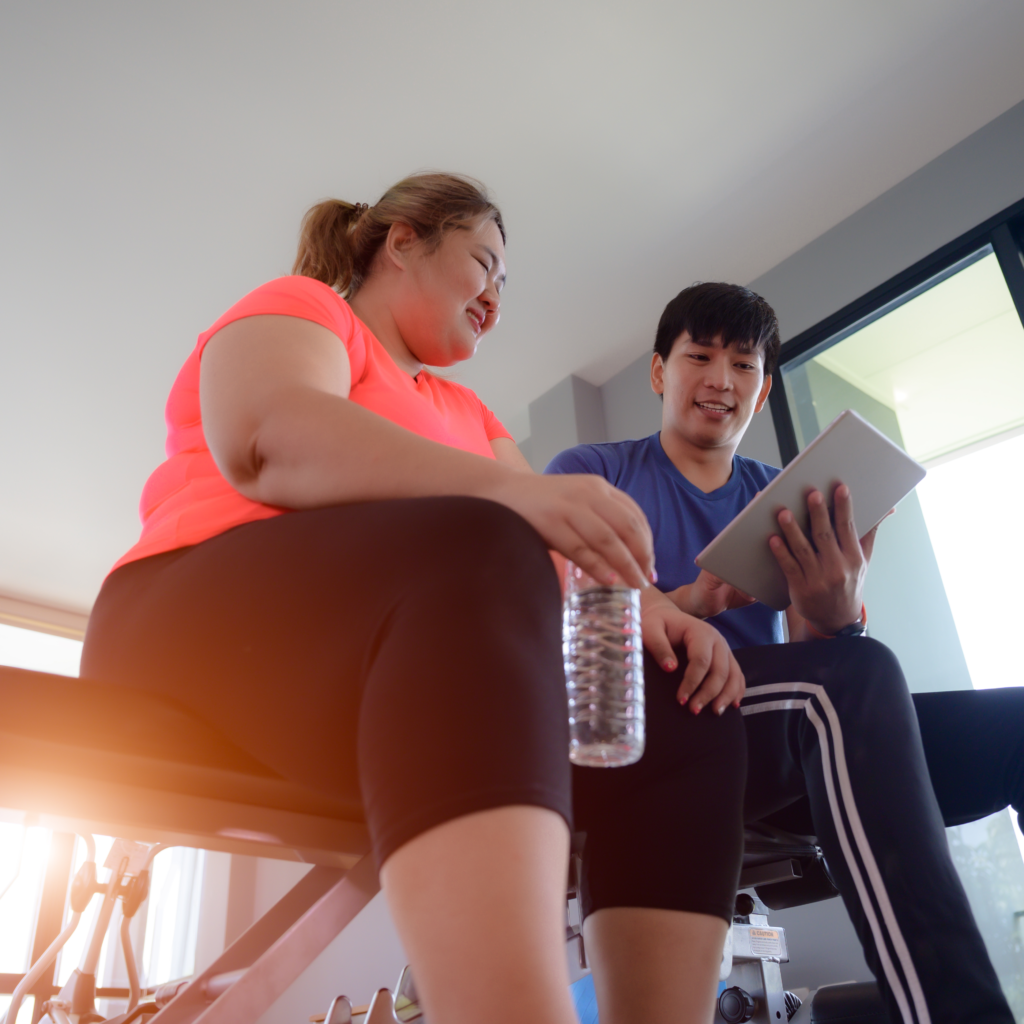How to Improve Muscle Recovery After a Workout: The Science and Techniques of Breathwork
Exercise is a fantastic way to enhance physical health, but the period after your workout is equally important for achieving overall fitness and wellness. Often overlooked, is a simple way to not only combat our general stress levels but also improve muscle recovery after workout. The idea here is breathwork or breath training. There are the many benefits of intentional post-workout breathing techniques. Properly managed breath can aid in recovery, build muscle, and foster a sense of calm and well-being. In this article, we’ll explore the significance of post-workout breathwork, the science behind it, and practical techniques to integrate into your routine.
Understanding the Science Behind Post-Workout Breathwork:
The significance of post-workout breathwork lies in its ability to influence the autonomic nervous system, which controls vital functions like heart rate, blood pressure, and stress response.
Physical exercise takes a toll on our muscles. Intense workouts, whether it’s weightlifting, high-intensity interval training, or endurance sports, create micro-tears in muscle fibers. While this process is essential for muscle growth and strength development, efficient recovery is equally crucial to ensure that you get the most out of your training.
This is where the science of breathwork comes into play. Breathwork techniques, which involve conscious control of your breath, can significantly improve muscle recovery after workout by influencing several physiological factors.

How Does Breathwork Improve Muscle Recovery After a Workout?
Oxygen Delivery: One of the primary benefits of breathwork for muscle recovery is its effect on oxygen delivery. Deep, controlled breathing enhances oxygen uptake, increasing the oxygen supply to your muscles. Oxygen is crucial for energy production, and by improving its delivery to muscle tissues, you accelerate the recovery process.
Reducing Stress: High-stress levels can impede muscle recovery. Stress triggers the release of cortisol, a hormone that can break down muscle tissue. Controlled breathing techniques, such as diaphragmatic breathing and progressive muscle relaxation, activate the parasympathetic nervous system, reducing stress and cortisol levels, which, in turn, aids in muscle repair and growth.
Eliminating Waste Products: During exercise, your muscles produce metabolic waste products like lactic acid. These waste products can contribute to post-workout soreness and fatigue. Deep breathing facilitates the removal of these waste products by enhancing blood circulation. Improved circulation helps transport these waste products away from your muscles, reducing discomfort and promoting quicker recovery.
Help Your Body Relax: Breathwork, especially techniques like progressive muscle relaxation, can alleviate damage to your muscles. After an intense workout, muscles can remain contracted, leading to discomfort and potential injuries. These techniques encourage relaxation and lengthening of muscle fibers, allowing them to heal effectively.
Incorporating breathwork into your post-workout routine can be a game-changer in terms of muscle recovery. By optimizing oxygen delivery, reducing stress, eliminating waste products, and relaxing muscle or joint tension, you can bounce back from your workouts more quickly, experience less soreness, and be better prepared for your next training session. Understanding the science behind breathwork for muscle recovery empowers you to make the most of your exercise regimen and attain your fitness goals more efficiently.
Benefits of Full and Fluid Breathing:
Deep breathing offers numerous health benefits, from “stress reduction to a slower heartbeat and reduced blood pressure”. Proper breathing can help your muscles recover after intense exercise despite your fitness level. Listen to your body and give your body active recovery to decrease muscle soreness. Other benefits include:
- Boosted energy
- Decreased blood pressure
- Better sleep
- Improved function of the immune system
- Improved performance and recovery
- Feelings of relaxation
- Less lactic acid in muscle tissue
- Fewer stress hormones being produced
- Balanced oxygen and CO2 in the blood
Optimal Breathing vs. Ineffective Breathing for Workout Recovery
t might come as a surprise, but there are right and wrong ways to breathe. When you breathe ‘incorrectly,’ it can trigger your central nervous system, pushing you into a fight-or-flight response. This surge of adrenaline can result in an accelerated heart rate, chest tightness, shoulder pain, and bothersome headaches when breathing patterns are irregular. These physical responses can needlessly elevate stress and anxiety because your breathing pattern directly influences your physical and emotional state.
In contrast, when you breathe correctly, your body gains the ability to regulate fear, anxiety, and stress effectively. Deep, intentional breathing lowers both your heart rate and respiration rate, promoting relaxation and a profound sense of calm. Furthermore, deep breathing offers hormonal benefits linked to relaxation.
Mastering the art of ‘proper’ breathing, which entails effortless, mindful breaths during exercise and in your daily life, is pivotal for maintaining overall well-being and emotional balance.
Nasal Breathing is Essential to Speed Up muscle Recovery Time:
According to the American Institute of Stress, Nasal breathing increases oxygen transport for your body, it ensures that your diaphragm (lead breathing muscle) is able to function properly and as a result activates the calming side of the nervous system: parasympathetic. This puts us in a natural state of restoration and rejuvenation, reduces inflammation, and helps muscles recover.
Nasal breathing is a powerful yet often overlooked tool for expediting post-workout recovery. When you breathe through your nose, you engage a natural filtration system that warms, humidifies, and purifies the air entering your lungs. This optimizes oxygen exchange and minimizes the risk of irritants reaching your respiratory system.
Moreover, nasal breathing encourages diaphragmatic breathing, which enhances oxygen absorption and carbon dioxide release, promoting a balanced pH in your body. This combination not only supports efficient energy production but also reduces the likelihood of over-breathing, which can lead to muscle fatigue.
In essence, nasal breathing is a vital component of the recovery process, ensuring you bounce back from workouts with greater ease and speed and should be added to your workout routine to improve recovery from exercise.

Improve Recovery Time After a Workout Using Breathing Techniques:
here are a wide variety of breathing techniques that speed up recovery and diminish delayed onset muscle soreness (DOMS). In a general sense, you may want to assume gentle breathing techniques. This is one of the best ways to reduce muscle strain and let your muscles recover faster.
Gentle breathing techniques can range from Ujjayi (Victory Breath), humming and syllable meditations (chakra tones like om, lam, ham, etc), polyvagal tones (vrroom, ooohh, eehhh, ahhhh etc.), or any form of soft and easy breathing. Here are some great breathing techniques for faster recovery after exercise:
1. Diaphragmatic Breathing:
- Scientific Basis: This technique activates the parasympathetic nervous system, reducing the “fight or flight” response post-exercise. Deep inhalations through the nose and exhalations through the mouth facilitate relaxation and decrease stress levels. To practice, sit or lie down, inhale for a count of four, allowing your abdomen to rise, and exhale for four counts.
2. Box Breathing:
- Scientific Basis: Structured box breathing helps regulate breath rate and heart rate variability. This technique fosters parasympathetic dominance, promoting calm and balance. After your workout, practice box breathing by inhaling for four counts, holding for four counts, exhaling for four counts, and holding for four counts again.
3. Pursed Lip Breathing:
- Scientific Basis: Pursed lip breathing enhances oxygen exchange and is particularly beneficial for those experiencing breathlessness post-exercise. It increases expiratory airflow, improving oxygen saturation. After your workout, inhale through your nose and exhale through pursed lips, extending the exhale for a calming effect.
4. Progressive Muscle Relaxation Breathing:
- Scientific Basis: Sore muscles often follows physical exertion. Progressive muscle relaxation breathing combines deep breaths with tension release. By consciously relaxing muscle groups from your toes to your head, you can reduce muscle soreness and promote quicker recovery.
5. Alternate Nostril Breathing:
- Scientific Basis: This technique, rooted in yoga and mindfulness, balances the autonomic nervous system. By alternating airflow between nostrils, it influences the body’s energy flow, promoting relaxation. After your workout, sit with a straight spine, and alternate inhaling and exhaling through each nostril for a few minutes to regain equilibrium.

Practical Application: How to Employ Post-Workout Breathwork:
o effectively integrate post-workout breathwork into your routine, follow these practical steps:
- After your workout: Find a quiet and comfortable place to sit or lie down.
- Choose your technique: Select the post-workout breathing technique that aligns with your goals and how you’re feeling.
- Begin the practice: Follow the specific instructions for your chosen technique. Practice for at least 5-10 minutes to experience the full benefits.
- Stay consistent: Make post-workout breathwork a regular part of your exercise routine. As you make it a habit, you’ll start to notice improvements in your recovery, muscle relaxation, and overall well-being.
- Take a full recovery day from resistance exercise and pay attention to what your body needs. This will result in less muscle soreness and reduce overall time to recover. Part of recovery and increasing muscle strength is waiting 1-2 days after a tough workout to do moderate to intense exercise again. This is great opportunity to increase your muscle recovery routine by focusing more on your breath training. Working out too frequently and having inadequate rest and recovery will cause muscle imbalances and jeopardize overall wellbeing.

Give your Muscles Faster Exercise Recovery
Trending Post
7 Surprising Benefits of Daily Breathwork Practice
Personal Growth: What does this mean?
Virtue: Live by Your Own Truth
